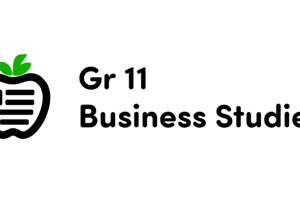Podcast
Questions and Answers
What is the primary purpose of an incentive mechanism in a principal-agent relationship?
What is the primary purpose of an incentive mechanism in a principal-agent relationship?
- To increase the agent's salary directly
- To align the interests of the principal and agent (correct)
- To limit the principal's decision-making power
- To create more agency costs
Which of the following best defines agency costs?
Which of the following best defines agency costs?
- Costs incurred in hiring additional agents
- Costs related to oversight, guarantees, and residual losses (correct)
- Costs originating from product development
- Costs associated with regulating the marketplace
What is a key resource characteristic that can lead to sustained competitive advantage?
What is a key resource characteristic that can lead to sustained competitive advantage?
- Being easily available in the market
- Being widely imitated by competitors
- Being common across all firms
- Being valuable, rare, and difficult to imitate (correct)
Which type of firm ownership is characterized by capital being owned by the government?
Which type of firm ownership is characterized by capital being owned by the government?
Which classification criteria considers where a firm performs its activities?
Which classification criteria considers where a firm performs its activities?
Which of the following is NOT a type of legal form for firms?
Which of the following is NOT a type of legal form for firms?
What type of firm is primarily engaged in manufacturing or extractive activities?
What type of firm is primarily engaged in manufacturing or extractive activities?
What is one of the primary implications of information asymmetry in agency relationships?
What is one of the primary implications of information asymmetry in agency relationships?
What is the primary goal of a firm according to neoclassical theory?
What is the primary goal of a firm according to neoclassical theory?
Which characteristic distinguishes firms from other organizations?
Which characteristic distinguishes firms from other organizations?
What does transaction cost theory primarily focus on?
What does transaction cost theory primarily focus on?
How does a firm create value from a social perspective?
How does a firm create value from a social perspective?
What is the impact of disproportionate income inequality as noted in the content?
What is the impact of disproportionate income inequality as noted in the content?
Which aspect is NOT considered in the make-or-buy decision under transaction cost theory?
Which aspect is NOT considered in the make-or-buy decision under transaction cost theory?
What does agency theory suggest about firms?
What does agency theory suggest about firms?
Which of the following is a characteristic of an organization as a social entity?
Which of the following is a characteristic of an organization as a social entity?
Flashcards
Distinct Purpose
Distinct Purpose
A specific purpose the organization aims to achieve. This could involve creating a product, offering a service, or reaching a particular outcome.
People
People
People are the fundamental building blocks of any organization. Without individuals working together, an organization cannot function.
Deliberate Structure
Deliberate Structure
A structured way of organizing tasks and responsibilities among members. This helps ensure efficient execution of the organization's goals.
Firm
Firm
Signup and view all the flashcards
Firm as an Economic Reality
Firm as an Economic Reality
Signup and view all the flashcards
Firm as a Social Reality
Firm as a Social Reality
Signup and view all the flashcards
Bounded Rationality
Bounded Rationality
Signup and view all the flashcards
Opportunism
Opportunism
Signup and view all the flashcards
Principal-Agent Problem
Principal-Agent Problem
Signup and view all the flashcards
Incentive Mechanisms
Incentive Mechanisms
Signup and view all the flashcards
Agency Costs
Agency Costs
Signup and view all the flashcards
Resource-Based View (RBV)
Resource-Based View (RBV)
Signup and view all the flashcards
Private-owned Firm
Private-owned Firm
Signup and view all the flashcards
State-owned Firm
State-owned Firm
Signup and view all the flashcards
Mixed Equity Firms
Mixed Equity Firms
Signup and view all the flashcards
Industrial Firms
Industrial Firms
Signup and view all the flashcards
Study Notes
Table of Contents
- Unit 1 - The Firm
- Nature of the firm
- Types of firms
- Ownership and management
- Entrepreneurship
- Unit 2 - Theoretical Approaches to Management
- Classical approach
- Scientific management (Taylor)
- General administrative theory (Fayol, Weber)
- Behavioral approach (Munsterberg, Follett, Barnard)
- Quantitative approach
- Contemporary approaches
- Systems approach
- Contingency approach
- Classical approach
- Unit 3 - Business Environment
- General environment
- PESTEL forces (Political, Economic, Social, Technological, Environmental, Legal)
- Competitive environment
- Supplier, distributor, customer, competitor analysis
- Porter's Five Forces model
- Organizational culture
- General environment
- Unit 4 - Information and Decision Making
- Information and data
- Attributes of useful information (quality, timeliness, completeness, relevance)
- Decision making
- Steps in decision making
- Programmed vs. Nonprogrammed decisions
- Decision-making approaches (rational, bounded rationality, intuitive)
- Information and data
- Unit 5 - Business Management
- Business administrators and managers
- Main differences (firm size, stock market listing)
- Key decisions (CEO responsibilities and board roles)
- Nature of the manager's job
- Managerial roles
- Essential managerial skills
- Managerial functions (planning, organizing, leading, controlling)
- Relevant theories (Maslow's hierarchy of needs, Herzberg's two-factor theory)
- Business administrators and managers
- Unit 6: Objectives and Growth of the Firm
- Economic goal and value creation
- Accounting profit
- Economic profit
- Shareholder profitability
- Social responsibility, sustainability, and ethics
- Organizational strategy
- Corporate strategies (vertical, specialization, diversification, international, horizontal)
- Levels of strategy (corporate, competitive, functional)
- Innovation
- Types of innovation
- Innovation Strategies
- Economic goal and value creation
Studying That Suits You
Use AI to generate personalized quizzes and flashcards to suit your learning preferences.




